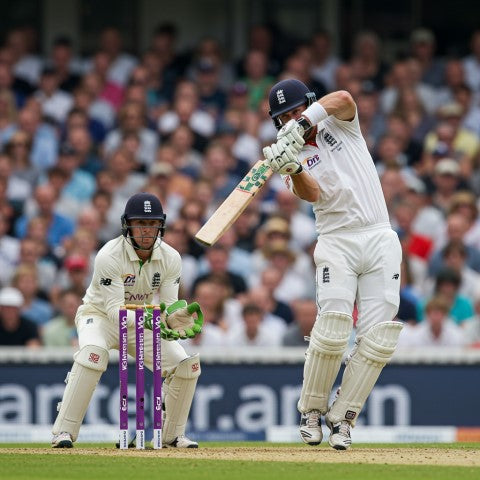What Are the Most Common Cricket Injuries and How Do You Prevent Them?

At first glance, cricket may seem less hazardous than contact sports such as rugby or football. There are no heavy tackles, scrums, or constant body collisions. Yet, anyone who follows the game closely knows that injuries are common, sometimes severe, and often career-defining. Long seasons, repetitive actions, and sudden bursts of explosive movement all combine to put tremendous stress on the body.
What makes cricket unique is that different roles within the team come with very different injury risks. Fast bowlers, for instance, face repetitive strain in their backs and shoulders. Batsmen often contend with finger fractures and muscle strains, while wicketkeepers and fielders are prone to impact injuries and joint problems.
Even though it is non-contact, cricket has one of the most diverse injury profiles in sport. These risks are particularly relevant in cricket trials, where players often push themselves harder than usual to impress selectors, sometimes at the cost of managing their bodies wisely.
This article examines the most common cricket injuries, why they happen, and—most importantly—how to prevent them. From strength and conditioning to protective equipment, we’ll look at practical ways players of all levels can stay fit and extend their playing careers.
Why Cricket Has Its Own Unique Injury Profile
Cricket’s structure contributes heavily to its injury patterns. Matches can last from three hours to five days, with players required to concentrate and perform in bursts of high-intensity effort spread over long periods of low activity. The constant shifting between stillness and explosiveness can strain muscles, tendons, and joints.
Bowling actions, particularly fast bowling, are among the most physically demanding movements in all of sport. The repeated twisting, arching, and forceful rotation of the spine and shoulders can create stress fractures, muscular strains, and overuse injuries. Studies consistently show fast bowlers have the highest injury incidence in cricket, especially younger players who bowl long spells before their bodies have fully developed.
Modern schedules have only amplified these risks. Players now juggle domestic competitions, international fixtures, and lucrative franchise leagues such as the IPL or The Hundred. The overlap of formats means less rest, more travel, and reduced recovery windows. Fatigue not only heightens the chance of overuse injuries but also increases the likelihood of acute problems like muscle pulls or sprains. In short, cricket’s unique blend of endurance, repetition, and intensity creates an injury profile unlike most other sports.
Most Common Cricket Injuries
Although injuries can occur anywhere in the body, certain conditions appear again and again in cricket due to its repetitive actions and high-speed movements. These can be grouped by player role.
Fast Bowlers
Fast bowlers experience the highest strain because of the repeated, high-impact nature of their action. Common injuries include:
-
Lumbar Stress Fractures: Lower back stress fractures are particularly prevalent among young bowlers. The repetitive extension and rotation of the spine, combined with landing impact, make the lumbar vertebrae highly vulnerable. These injuries can sideline bowlers for months and sometimes threaten long-term careers.
-
Shoulder Impingement: Overuse of the bowling arm often leads to inflammation in the shoulder joint. Bowlers may feel pain when lifting their arm overhead or delivering the ball, which can reduce pace and accuracy.
-
Side Strains: Oblique or abdominal muscle strains occur when bowlers twist their torso forcefully through delivery. They are painful and can make bowling at full pace impossible until healed.
Batsmen
While batsmen are less prone to overuse injuries, they face a high risk from impact and sudden movements. Typical injuries include:
-
Finger Fractures or Dislocations: One of the most common problems for batters, caused by fastballs striking the glove or mishandled shots. Even with protective gloves, the fingers remain vulnerable.
-
Hamstring Pulls: Sprinting between wickets or turning sharply can lead to hamstring strains, especially late in innings when fatigue sets in.
-
Side Strains: Much like bowlers, batsmen use their core muscles extensively. Over-rotation or sudden power shots can strain obliques and abdominal muscles.
Fielders and Wicketkeepers
Fielders and keepers face a mixture of impact and joint injuries due to diving, sprinting, and repetitive crouching. Common examples include:
-
Sprained Ankles: Sudden changes of direction or awkward landings while fielding can lead to ankle sprains, which vary from mild to severe.
-
Knee Ligament Injuries: High-impact dives or awkward stops may damage the ACL or MCL, sidelining players for months.
-
Shoulder Injuries: Powerful throws from the boundary often strain the rotator cuff or shoulder joint.
-
Hand and Finger Injuries: Wicketkeepers are especially vulnerable, with repeated ball impact causing bruising, fractures, or dislocations.
General Across All Players
Some injuries occur regardless of role. These include:
-
Groin Strains: Caused by quick lateral movements and sprints.
-
Concussions: Rare but serious, usually from bouncers hitting the helmet or collisions in the field.
-
Blisters: Long batting sessions or extended bowling spells often lead to hand or foot blisters, which, while minor, can affect performance.
How to Prevent Cricket Injuries
Prevention is always better than a cure. While not every injury can be avoided, players who train smartly and care for their bodies can significantly reduce risk. Key strategies include:
-
Strength and Conditioning: A well-structured fitness programme builds the muscles needed to support bowling actions, batting strokes, and fielding movements. Core strength reduces back injuries, while lower-body strength helps bowlers absorb impact.
-
Workload Management: Over-bowling is a common cause of stress fractures. Coaches and players must monitor how many overs or deliveries are bowled, especially by young fast bowlers. Rest periods are as important as training.
-
Proper Technique: Many injuries stem from flawed mechanics. Professional coaching to ensure correct bowling actions, batting stances, and throwing techniques lowers the chance of repetitive strain.
-
Protective Gear: Helmets, pads, gloves, thigh guards, and wicketkeeping gear are non-negotiable. High-quality equipment that fits correctly provides essential protection against impact injuries.
-
Warm-Up and Recovery: Dynamic stretches, light jogging, and mobility drills prepare muscles for intense activity. After games or training, cool-down exercises and stretching reduce stiffness and aid recovery.
-
Nutrition and Hydration: A balanced diet supports muscle repair and bone health. Staying hydrated helps prevent cramps and maintains concentration. Electrolyte replacement is particularly important in hot conditions.
Together, these strategies form a comprehensive shield against the most common cricket injuries.
Injury Management: What to Do If It Happens
Even with the best preparation, injuries can still occur. Knowing how to respond immediately can make recovery quicker and more effective. Minor strains and sprains often respond well to the RICE method: Rest, Ice, Compression, and Elevation. This reduces swelling and pain in the first 48 hours.
More serious injuries require professional evaluation. A physiotherapist or sports doctor can diagnose the problem and recommend rehabilitation. Attempting to play through significant pain or rushing back too soon often worsens the injury and extends recovery time.
For players of all levels, patience is crucial. Returning to training gradually, under guidance, helps rebuild strength and confidence while reducing the chance of re-injury. In cricket, managing injuries wisely can be the difference between a short career and a long one.
Future of Injury Prevention in Cricket
The future of injury prevention looks increasingly scientific. Wearable technology, such as GPS trackers and workload monitors, allows coaches to track every sprint, dive, and bowling stride. Data analysis then highlights when a player is at risk of fatigue or overuse.
Academies and professional teams are also investing more in specialist strength and conditioning coaches. Players now benefit from tailored programmes that address individual weaknesses. This professionalisation, which once belonged only to elite levels, is slowly reaching grassroots cricket as well.
As the game continues to evolve, so too will the methods of protecting players. The aim is not just to treat injuries but to anticipate and prevent them before they happen.
Conclusion: Play Smart, Stay Safe
Cricket may not be a collision sport, but it carries its own set of unique and often serious injury risks. From back stress fractures in bowlers to finger injuries in batsmen and sprains among fielders, the list is long. Yet, most of these injuries can be prevented—or at least reduced—through fitness training, workload management, protective gear, and smart recovery practices.
Prevention not only keeps players on the field but also extends careers and improves performance. By respecting the body and taking a professional approach to preparation, cricketers at every level can focus less on injuries and more on enjoying the game. Staying safe is not about being cautious—it is about being prepared.





Leave a comment